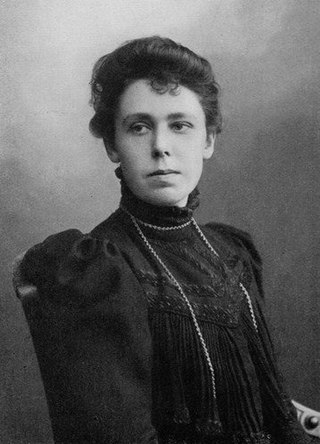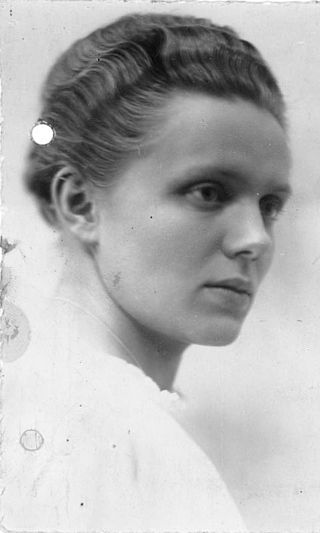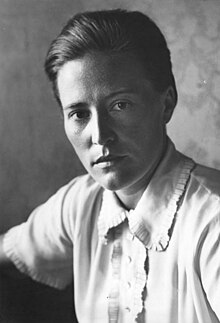Deutsche Lufthansa AG, or simply Lufthansa, is the flag carrier of Germany. When combined with its subsidiaries, it ranks second in Europe by passengers carried, as well as largest in Europe and fourth largest in the world by revenue. Lufthansa is also one of the five founding members of Star Alliance, which is the world's largest airline alliance, formed in 1997. Lufthansa was founded in 1953 and commenced operations in April 1955.

Hanna Reitsch was a German aviator and test pilot. Along with Melitta von Stauffenberg, she flight tested many of Germany's new aircraft during World War II and received many honors. Reitsch was among the very last people to meet Adolf Hitler alive in the Führerbunker in late April 1945.

The Dornier Do J Wal ("whale") is a twin-engine German flying boat of the 1920s designed by Dornier Flugzeugwerke. The Do J was designated the Do 16 by the Reich Air Ministry (RLM) under its aircraft designation system of 1933.

The Junkers A50 Junior is an all-metal sports plane designed and produced by the German aircraft manufacturer Junkers.
Austrian Airlines AG, often shortened to Austrian or AUA, is the flag carrier of Austria and a subsidiary of Lufthansa, the flag carrier of the Federal Republic of Germany. The airline is headquartered on the grounds of Vienna International Airport in Schwechat where it also maintains its hub. As of July 2016, the airline flew to six domestic and more than 120 international year-round and seasonal destinations in 55 countries and is a member of the Star Alliance.

Amelie Hedwig Boutard-Beese, also known as Melli Beese, was the first female German pilot, and airplane engineer female aviator.

Deutsche Luft Hansa A.G. was a German airline. It served as flag carrier of the country during the later years of the Weimar Republic and throughout Nazi Germany, when it had close links to the Nazi Party.

Theodora Rasche was Germany's first female aerobatics pilot.

The Junkers G 24 was a German three-engine, all-metal low-wing monoplane passenger aircraft manufactured by Junkers from 1925. Junkers F 24 was the designation for single-engine versions of the same aircraft.

The Junkers Ju 160 was a German single-engine, low-wing six-seat passenger transport aircraft developed from the Ju 60 and targeted at the same fast airliner market as the Heinkel He 70 and the Lockheed Model 9 Orion. The Deutsche Lufthansa fleet of 21 aircraft began operations in 1935 and continued until the start of World War II.

Ehrenfried Günther Freiherr von Hünefeld was a German aviation pioneer and initiator of the first transatlantic aeroplane flight from East to West.

Margarethe Mathilde von Wrangell, after 1928 Princess Andronikow, néeBaroness von Wrangell was a Baltic German agricultural chemist and the first female full professor at a German university.

Margarete Bieber was a Jewish German-American art historian, classical archaeologist and professor. She became the second woman university professor in Germany in 1919 when she took a position at the University of Giessen. She studied the theatre of ancient Greece and Rome as well as the sculpture and clothing in ancient Rome and Greece.

Margarete Heymann, also known as Margarete Heymann-Löbenstein, Margarete Heymann-Marks, and Grete Marks, was a German ceramic artist of Jewish origin and a Bauhaus student. In 1923 she founded the Haël Workshops for Artistic Ceramics at Marwitz that she had to close in 1933 and settled in Jerusalem. She moved to Britain in 1936 and continued her work, becoming world famous as “Greta Pottery”. Her finest work is considered to be from her working period in Germany.

Margarete Himmler, also known as Marga Himmler, was the wife of Reichsführer-SS Heinrich Himmler.

Hedwig Bollhagen was a German ceramicist and co-founder of the HB Workshops for Ceramics. A museum dedicated to her work has been opened near Berlin.
Luise Hoffmann was a German aviator. She was the first woman test pilot in Germany, and possibly in Europe.
Haël Workshops for Artistic Ceramics G.m.b.H. was a company which produced stoneware and was founded in 1923 by Dr Gustav Loebenstein, his wife Margarete and Daniel Loebenstein, housed on a lease basis in a former cocklestove factory, as the successor of the manufacturing company Petry in Marwitz, in the Margraviate of Brandenburg.
Ingrid Roitzsch was a German journalist and politician (CDU). She served between 1992 and 1993 as parliamentary secretary of state at the Ministry of Defence.

D-AQUI, at one point the oldest airworthy Ju 52 in existence, was produced in 1936, with serial number 5489 and given the registration D-AQUI Fritz Simon. It was sold to Norwegian airline DNL in 1936 and registered as LN-DAH Falken, only to be confiscated by the German Army in 1940 when Norway was invaded. At this time it was once again given the old D-AQUI registration, but renamed Kurt Wintgens.
















